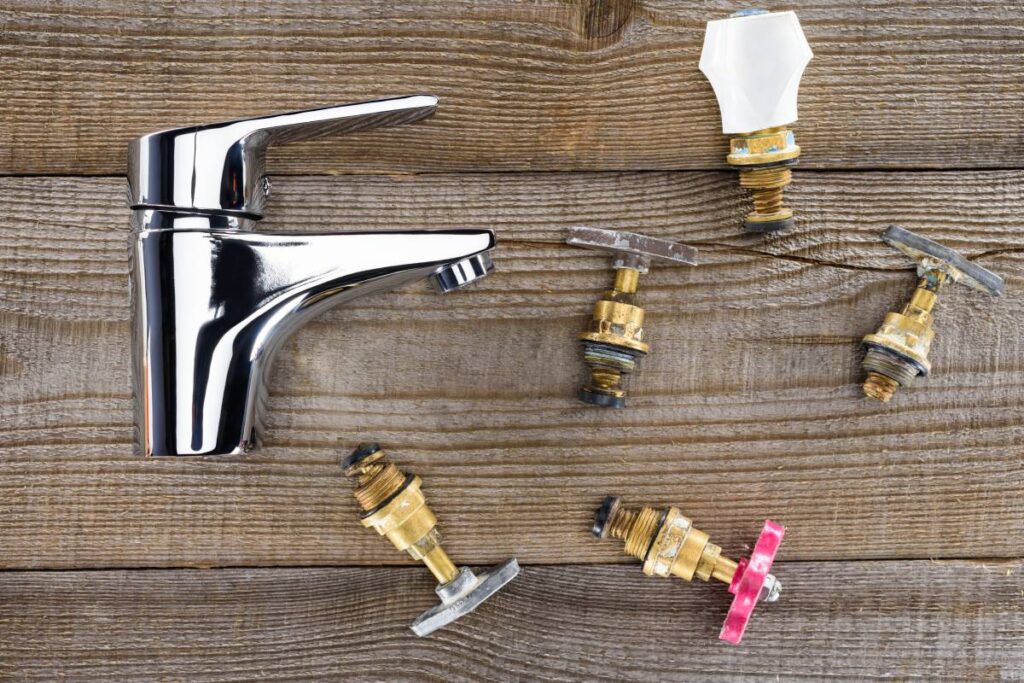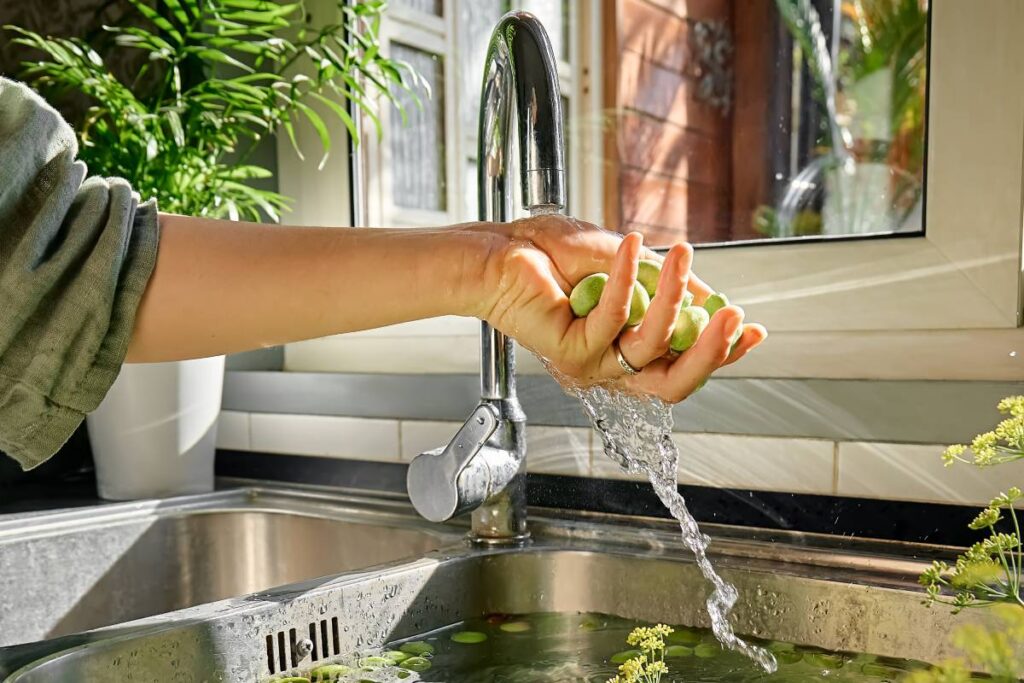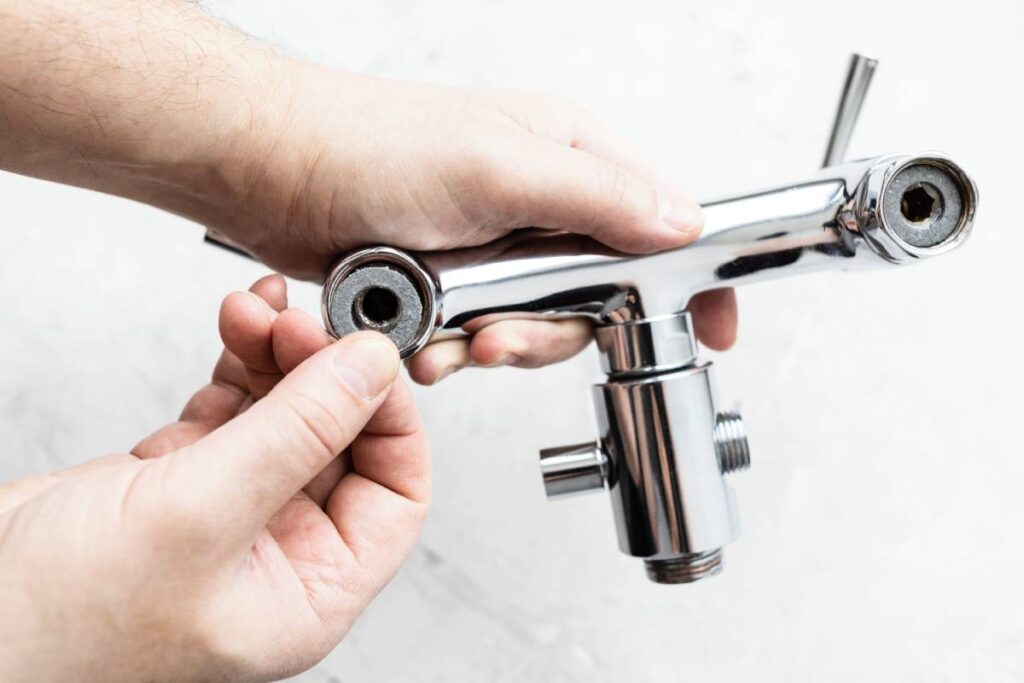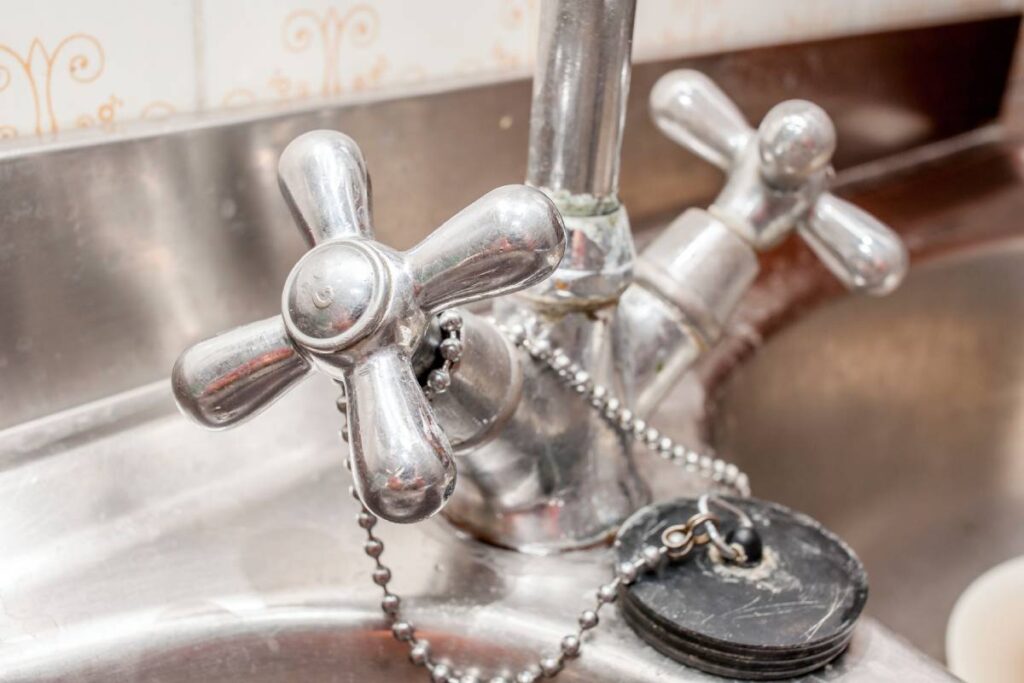A faucet is a vital component of your sink, allowing you to manage the flow of water in places like your kitchen, bathroom, or laundry room. Even though the faucets in different rooms might appear similar, they can vary significantly internally. Understanding the inner workings of a faucet can assist you in selecting a replacement or handling repairs.
In this guide, we’ll explain the details of the 4 common faucet types and the key factors to think about when renovating, fixing, or upgrading.
Related article:

30 CLEANING HACKS FROM AROUND THE WORLD

The 4 common types of faucet

Ball faucets
Ideal for: Kitchen and bathroom use
Ball faucets are prevalent in kitchen sinks and represent the original form of washerless faucets. They feature a single handle that moves across a rounded ball-shaped cap located near the base of the faucet spout. Inside, a special plastic or metal ball is controlled by this handle. The ball contains chambers or slots, along with rubber O-rings and spring-loaded rubber seals. By adjusting the position of the ball, the faucet regulates the flow and temperature of the water.
While the external part of the faucet is durable, the internal components may require more maintenance compared to other types. Due to the complexity of its parts, ball faucets are prone to leaks more than cartridge or disc faucets. However, being an older technology, ball faucets are among the more budget-friendly options available.
Pros:
- Streamlined single-handle design
- Widely used in kitchens
- Affordable
Cons:
- Prone to leaks
- Complex internal components
- Difficult to locate leaks

Disc faucet
Ideal for: Kitchens and bathrooms, especially suitable for individuals with grip difficulties
Ceramic disc faucets represent the latest advancement in modern faucet technology. They feature a single lever positioned over a broad cylindrical body. Inside, hot and cold water mix within a pressure balance cartridge known as the mixing chamber. Two ceramic discs located at the chamber’s base adjust to regulate water volume, while temperature control is achieved through sideways handle rotation. These faucets boast high-quality construction, exceptional reliability, and infrequent repair needs. However, their advanced technology and durability contribute to a higher price point compared to other faucet types.
Requiring minimal lever movement to activate water flow, ceramic disc faucets are incredibly touch-sensitive, making them particularly suitable for individuals with arthritis or grip challenges.
Pros:
- Incorporates newer, more reliable technology
- High-quality construction
- Resilient to extreme temperatures
Cons:
- Ceramic discs may degrade over time
- May take time to adjust to the faucet’s tactile feel
- Relatively higher cost due to advanced technology

Double-handle cartridge faucets
Ideal for: Kitchens and bathrooms
Double-handle cartridge faucets closely resemble compression washer faucets, but you can distinguish them by the feel of the handles during use. Unlike compression faucets, where you need to tighten the washer to stop the water flow, cartridge faucets offer a smooth and consistent action. A simple half-turn of the handle switches the faucet from off to on, without the need for additional pressure as in compression faucets.
The cartridges in these faucets are known for their durability and ease of replacement, potentially requiring less maintenance compared to other types. However, depending on the sink’s manufacturer and model, replacing cartridges could be expensive, with some costing over $100.
Pros:
- Smooth operation
- Cartridges are generally long-lasting
- Easy to repair
Cons:
- Hard water deposits may obstruct cartridges
- Seals at the bottom of cartridges can deteriorate
- Replacement cartridges for certain brands can be pricey

Compression washer faucet
Ideal for: Utility sinks, commonly found in older homes
Compression washer faucets have been a staple since indoor plumbing’s inception. While prevalent in older homes, updated versions are still used in utility sinks in newer residences. These faucets are often the most budget-friendly option initially, but they tend to be less durable over time, often experiencing leaks and requiring maintenance. However, replacement parts are typically inexpensive.
Identifiable by their separate hot and cold water handles, compression washer faucets operate by tightening the handles down to halt water flow. They utilize a compression stem, resembling an advanced screw with a washer pressing against a valve seat.
Pros:
- Economical upfront cost
- Matches the aesthetics of older homes
- Simple to repair, despite quick wear and tear
Cons:
- Prone to leaks
- Requires more maintenance compared to other valve types
- Relies on older technology
How do I choose the right faucets for my home?
While faucets are built to endure for years, factors like wear and tear, environmental conditions such as hard water, and maintenance issues can lead to premature failure. There are usually clear indicators that it’s time for a new faucet: rust on the tap, a worn or flaking finish, leaky handles, and persistent leaks despite attempts at repair. You can swap out an entire faucet for a different type, but replacing just the assembly isn’t an option. For instance, if you have an older cartridge faucet, you can upgrade to a single-handle model with a ceramic disc assembly.
Consider your sink setup as well. Switching from a two-handle to a single-handle faucet is possible, but ensure the new faucet’s baseplate adequately covers any extra holes. If you have only one hole, stick with a single-handle faucet.
When deciding between faucet types, think about these five additional factors:
- For easy repairs, opt for a cartridge faucet, especially if you’re not handy at home.
- If you have disabilities or arthritis, go for a disk faucet, which is easy to operate.
- Choose an affordable ball-type faucet for a basic, sleek single-handle option.
- For maximum durability and modern features, select a disk faucet, but be aware that repairs can be costly and may require professional assistance.
- If you’re upgrading from compression faucets in an older home, consider consulting a plumber to ensure compatibility.








